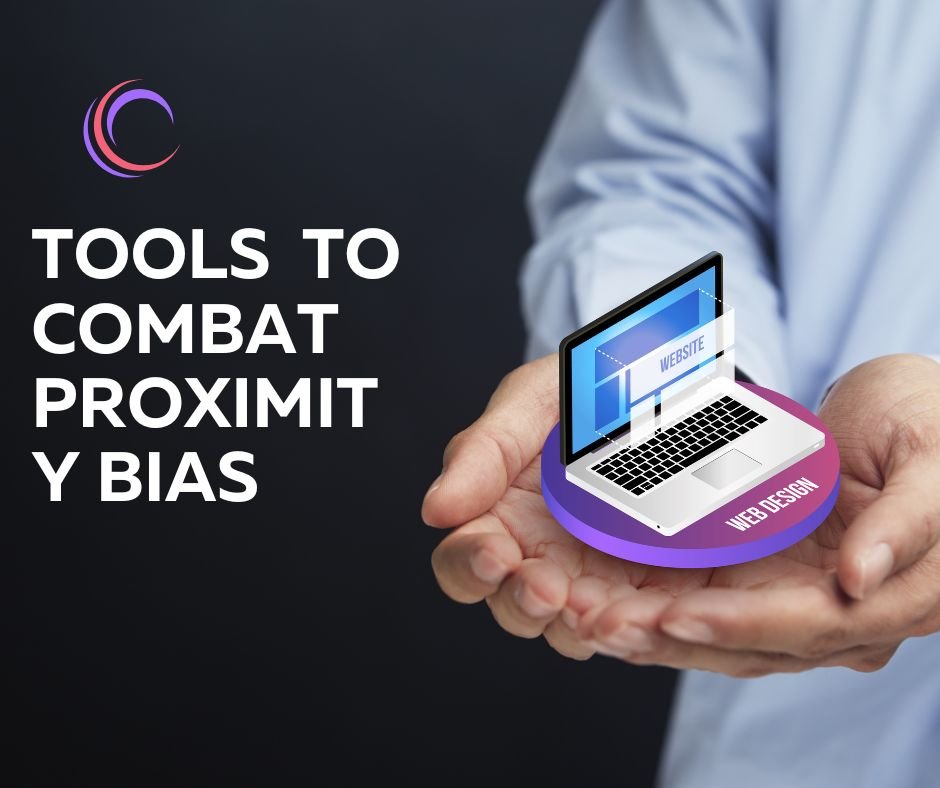While companies celebrate remote work’s flexibility, a silent threat is undermining fairness and productivity: proximity bias. This unconscious tendency to favor employees who are physically or digitally “closer” to leadership is creating a two-tier workforce in distributed companies.
The Shocking Reality of Proximity Bias
- 72% of managers admit to giving preferential treatment to employees they see more often (Gartner 2024)
- Remote workers receive 31% fewer promotions than hybrid colleagues (Harvard Business Review)
- “Out of sight” employees get assigned 42% less high-visibility work (Stanford Research)
How Proximity Bias Manifests in Remote Work
- Meeting Marginalization
- Hybrid meetings often ignore remote participants
- 68% of remote workers report being talked over or excluded (Buffer Report)
- Camera-off participants receive 53% less airtime (MIT Study)
- Opportunity Hoarding
- Last-minute in-person assignments go to office workers
- Remote employees miss hallway conversations that lead to promotions
- “Quick syncs” favor those in similar time zones
- Performance Perception Gaps
- Managers rate visible workers 22% higher on performance reviews (LinkedIn Data)
- Actual output measurements show no such difference
- Quiet achievers get overlooked for flashy performers
The Business Costs Are Staggering
- Companies lose $13,000 per employee annually in lost productivity (McKinsey)
- Turnover rates are 2.4x higher among “periphery” workers
- Innovation suffers as diverse perspectives get excluded
5 Proven Solutions From Companies Getting It Right
- The “Remote First” Meeting Standard (GitLab)
- All participants join individually, even if in same office
- Structured speaking turns using round-robin
- Results: 89% better meeting inclusion scores
- Opportunity Distribution Algorithms (Salesforce)
- AI tracks high-value assignments across locations
- Ensures equitable distribution of stretch projects
- Increased remote promotions by 37%
- Asynchronous Decision Making (Zapier)
- All proposals documented before discussion
- 48-hour comment period for all time zones
- Reduced “quick decision” bias by 63%
- 360° Visibility Dashboards (Automattic)
- Tracks contributions across communication channels
- Surfaces quiet achievers’ work to leadership
- Improved retention of top performers by 28%
- Bias-Aware Performance Reviews (Shopify)
- Structured rubrics focusing on deliverables
- “Contribution mapping” shows impact beyond meetings
- Narrowed promotion gaps by 41%

Your 30-Day Proximity Bias Cleanse
Week 1: Awareness
- Audit last quarter’s promotions for location patterns
- Survey employees about perceived fairness
- Identify 3 bias hotspots in your workflows
Week 2: Process Changes
- Implement “remote first” meeting standards
- Create an opportunity distribution system
- Set up contribution tracking dashboards
Week 3: Leadership Training
- Teach managers to recognize proximity bias
- Practice inclusive facilitation techniques
- Establish “bias pause” moments before decisions
Week 4: Measurement
- Track assignment distribution
- Monitor meeting participation rates
- Survey employee perceptions
Tools to Combat Proximity Bias
- Equal Time – Monitors speaking time in meetings
- Workplace Analytics – Tracks contribution patterns
- Lattice – Bias-aware performance reviews
- Allie – AI that flags potentially biased language
The Future of Equitable Remote Work
Forward-thinking companies are:
– Making “proximity bias audits” standard practice
– Designing promotion processes that account for location
– Creating “virtual watercoolers” for organic connections
– Training managers in distributed leadership
As the Head of Remote at a Fortune 500 company shared: “We don’t just enable remote work – we actively dismantle the advantages of being in-office.”

Key Takeaways:
- Proximity bias is remote work’s silent productivity killer
- The costs include lost talent, innovation, and fairness
- Solutions exist from meeting protocols to AI tools
- Regular audits prevent backsliding
- Equity requires intentional design, not just good intentions
The most successful distributed organizations won’t be those with the fanciest offices, but those that ensure every employee – regardless of location – has equal opportunity to contribute and advance.

